Talking about Feelings
Writing a history of emotions is no easy task. How can we find out how people felt in the past? Where can we find traces of their emotions?


If you have ever tried to fake an emotion – or witnessed someone else trying to do this – you have probably found that it is not an easy task. However, if you persist, you might end up actually feeling the emotion you were trying to fake. At least, that is what a study of the emotional training of airline flight attendants showed. These flight attendants not only learned to smile to the passengers, but also learned to really mean it.
In her keynote talk at the LUCAS Graduate Conference 2015 on ‘Breaking the Rules’, Barbara H. Rosenwein used this example to stress the close connection between performing and feeling emotions, arguing that the emotions that were expressed in textual records can tell us something about what people really felt. This is also one of the starting points of her new book Generations of Feeling: A History of Emotions, 600-1700.
Barbara Rosenwein is a name well known in the field of the history of emotions. She published several books and articles on the subject, most notably Emotional Communities in the Early Middle Ages (2006). Those ‘emotional communities’ are groups of people who share the same norms of emotional expression and value the same emotions.
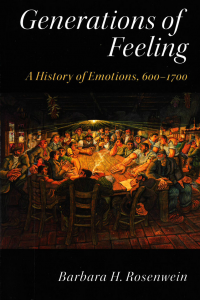

Generations of Feeling can be seen as a successor of Emotional Communities, being both broader in scope and conceptually more developed. The book explores in a chronological order some emotional communities, with what Rosenwein herself labels as a microhistorical approach. She discusses emotions in avrious writings, such as those of sixth-century bishop Gregory of Tours, the court of Toulouse around 1200, the thirteenth-century scholastic thinker Thomas Aquinas, the late medieval English mystic Margery Kempe, and the early modern philosopher Thomas Hobbes.
The title of the book, Generations of Feeling, refers to the key process that Rosenwein explores: how emotional communities dealt with the legacy of past communities, and how the meaning and value of certain emotions changed over time. Some of the reasons why emotional communities change include, according to Rosenwein, the influence of a charismatic personality, competition among groups, and the imitation of prestigious groups. Those changes are not abrupt; new generations use the legacies of past communities and combine them in new ways. Thus, Rosenwein stresses continuity, and argues that in the history of emotions there is no strict division between the medieval and modern periods.
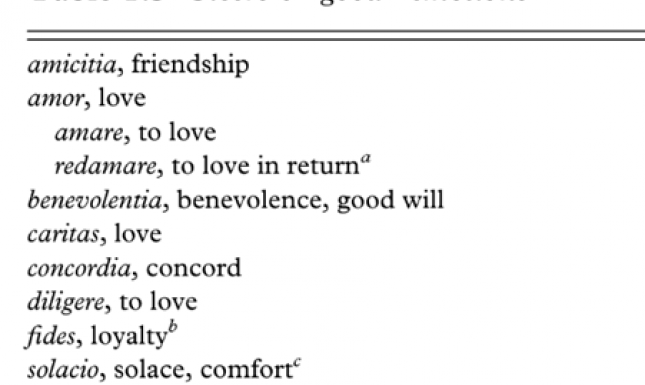

Rosenwein uses only textual sources and pays much attention to terminology. The advantage of this approach is that she very thoroughly uncovers past terminologies. Throughout the book, she provides many tables with the ‘emotion words’ used by a certain author or in a certain emotional community, accompanied by their modern English equivalents. However, the role of visual sources in expressing, communicating, arousing, and shaping emotions remains unexplored. To show the importance of the visual arts in the history of emotions, I will present a case study from the late medieval period: the so-called Picture book of Madame Marie.
This book with illustrations of the life and passion of Christ and of saints was made in the thirteenth century for a woman addressed as ‘Madame Marie’, who can possibly be identified as the noblewoman Marie de Rethel (d. 1315). First, we will take a look at a miniature showing the Deposition of Christ from the cross. Christ is held affectionately, but the nail being extracted from his feet remind the viewer of the gruesome details of the crucifixion. This image was meant to arouse strong feelings of compassion.
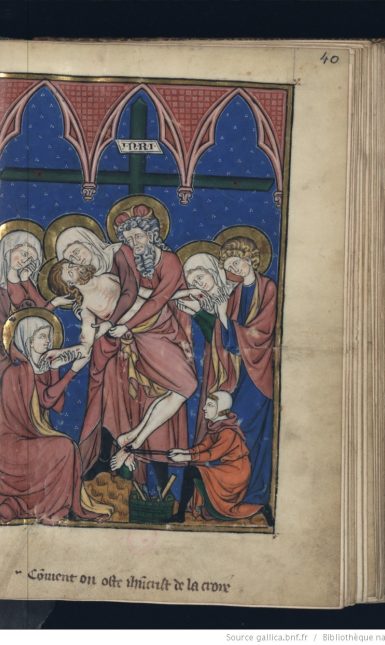

But how can we know if the artist succeeded in arousing these kinds of emotions, what the viewer actually felt while looking at the images, when we have no textual record of this? Fortunately, she left some traces of her emotions on the pages of her book. This makes visual sources indispensable for the history of emotions; the cannot only show us which emotions the artist tried to arouse, but can also provide a glimpse of the emotions expressed by the viewer.
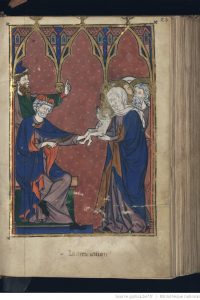



In several illustrations, the faces of Mary and the infant Christ look damaged or smudged, such as in the scene of the circumcision. What has happened here? Probably, the viewer expressed her feelings of love by affectively touching or kissing the image. Some of the other figures in the book, for example John the Baptist, show similar traces, revealing the personal preferences of the devotee. These kinds of physical rituals were quite common in medieval devotion.
As you can see in this illustration of the flagellation, not only pleasant emotions were expressed by the viewer. She also showed her anger at the torturers of Christ and martyrs, by violently scratching out their faces.
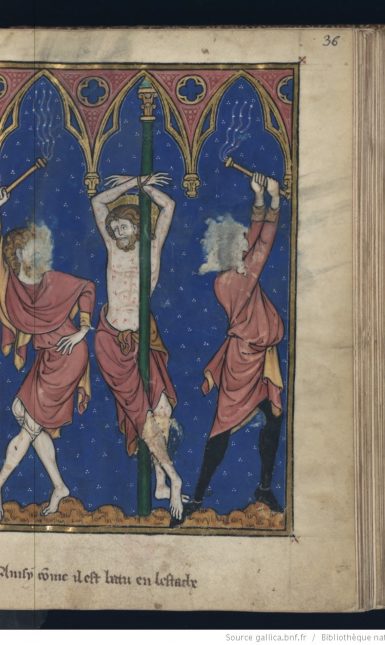

This brief case study shows that visual sources can be very valuable for the history of emotions. Not only are they capable of arousing and shaping emotions, they can also play an important part in the performance of these emotions. Just as flight attendants practice being friendly, medieval devotees practiced their feelings of compassion: fake it ’til you make it.
Further Reading:
Barbara Rosenwein’s foreword to the fourth volume of the Journal of the LUCAS Graduate Conference.
Barbara H. Rosenwein, Generations of Feeling: A History of Emotions, 600-1700 (Cambridge: Cambridge University Press, 2016).
Barbara H. Rosenwein, Emotional Communities in the Early Middle Ages (Ithaca, NY: Cornell University Press, 2006).
M. Alison Stones, Le Livre d'images de Madame Marie, Paris, Bibliothèque nationale, n.a.fr. 16251 (Paris: Bibliothèque nationale de France and Cerf, 1998).
© Lieke Smits and Leiden Arts in Society Blog, 2016. Unauthorised use and/or duplication of this material without express and written permission from this site’s author and/or owner is strictly prohibited. Excerpts and links may be used, provided that full and clear credit is given to Lieke Smits and Leiden Arts in Society Blog with appropriate and specific direction to the original content.



0 Comments